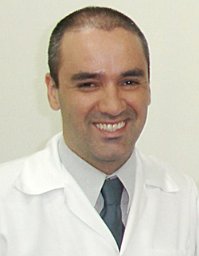M. C. Valera , Chr Camargo
Journal of Dental Research 262 -262
M. C. Valera , Chr Camargo , M. M. Menezes , Apm Gomes
Journal of Dental Research 229 -229
M. C. Valera , Chr Camargo , Mng Mancini
Journal of Dental Research 262 -262
Chr Camargo , L. D. Oliveira , Apm Gomes
Journal of Dental Research 1078 -1078
Chr Camargo , L. Marchini , Apm Gomes
Journal of Dental Research 1054 -1054
Ssk Busquim , M. C. Valera , Chr Camargo , R. Kraft
Journal of Dental Research 1071 -1071
M. C. Valera , Chr Camargo , J. F. Ribeiro
Journal of Dental Research 975 -975
A. A. Silva , P Monteiro , F Ceni , C Camargo
Veja Sao Paulo 25 ( 20) 29
J Sabatini , FRED Berbetz , E Tolentino , A Bronzini
Abstracts/Journal of the Neurological Sciences 357 e255 -e294
G Franklin , F Nascimento , A Meira , C Camargo
MOVEMENT DISORDERS 35 S13 -S14
V Rodrigues , F Castilho Pelloso , A Moro , S Raskin
MOVEMENT DISORDERS 34 S117 -S117
Roberta Isolan-Cury , Nilza Scalissi , Osmar Monte , Adriano Namo Cury
Fonética Clínica-Vinte anos de LIAAC. São Paulo: Pulso Editorial 33 -58
C Camargo , J Oliveira , A Basílio
Anais do 9 Congresso Luso-brasileiro para o planejamento urbano, regional, integrado e sustentável (PLURIS 2021 DIGITAL)
G Froehner , C Camargo , G Fabiani , A Meira
MOVEMENT DISORDERS 36 S353 -S354
F Germiniani , C Camargo , G Franklin , G Ribas
MOVEMENT DISORDERS 34 S606 -S606
A Stella , C Camargo , F Shibata , LC Furness
Agropecuária; resumos
Décio dos Santos Pinto Júnior , S Aguiar , C Camargo , JL Junqueira
Anais
GustavoL Franklin , CarlosHenrique Camargo , AlexT Meira , HélioA G. Teive
Annals of Indian Academy of Neurology 0
LM Abraão , CMCB Fortaleza , TA Barbosa , EP Lino Pereira-Franchi
Antimicrobial Resistance and Infection Control 4 ( 1) 194
STA Dantas , FC Campos , H Orsi , BF Rossi
1Department of Microbiology and Immunology, Institute of Biosciences, São Paulo State University, Botucatu, SP (Rua Dr. Plinio Pinto e Silva, s/n, Distrito de Rubião Jr., CEP: 18618-691, Botucatu, SP, Brazil); 2Departament of Veterinary Hygiene and Public Health, Faculty of Veterinary Medicine and Zootechny, São Paulo State University, Botucatu, SP (Rua Prof. Dr. Valter Maurício Corrêa, s/n, Distrito de Rubião Jr., CEP: 18618-970, Botucatu, SP, Brazil); and 3Adolfo Lutz Institute Bacteriology Division, São Paulo, SP (Avenida Dr. Arnaldo, 355, 11o andar, CEP: 01246-902, São Paulo, SP, Brazil). Biofilms can be considered a virulence factor, once they protect the microorganisms involved in their matrix, increasing resistance to the action of antimicrobials and sanitizers, and allow their propagation in the environment. This association constitutes a form of protection to its development, fomenting symbiotic relations and allowing the survival in hostile environments. Biofilms can be produced on various surfaces such as food, food processing equipment, water and industrial piping, ventilation, medical devices and living tissue. Considering the importance of Salmonella in the productive chain of poultry, its pathogenic potential for infection in humans and the capacity of cross-transmission between foods, our aim was to evaluate the production of biofilms by 40 strains of Salmonella spp. isolated from two different types of mats (canvas and polystyrene), present in a poultry slaughterhouse, during 20 consecutive weeks. In each collection, 6 samples from each type of mat were analyzed by swabs moistened with peptone water, and preincubated in this medium for 35ºC/24h, followed by enrichment in the Tetrathionate and Rappaport Vassiliadis broths (35ºC and 42ºC, respectively) and plated on to

